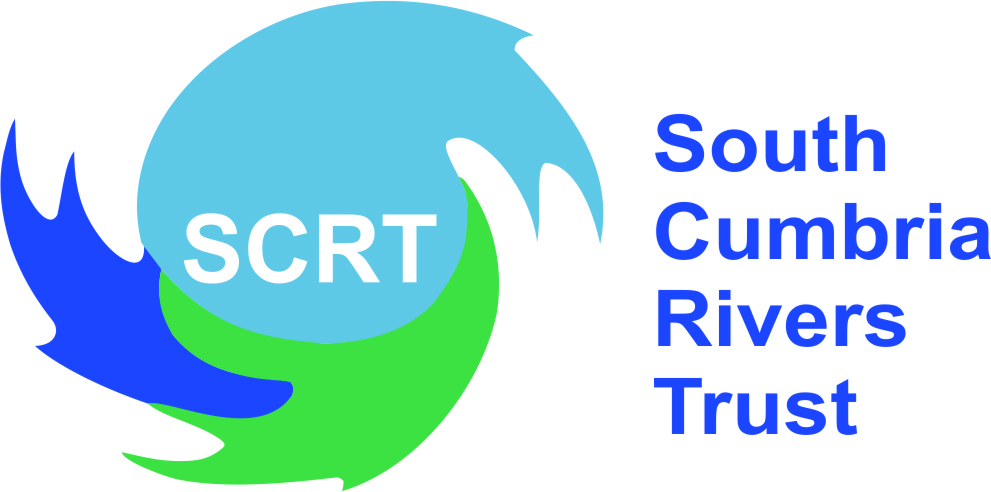South Cumbria Rivers Trust
WATER QUALITY
South Cumbria Rivers Trust is a not-for-profit, environmental charity whose aims and objectives are defined as: –
- To monitor, conserve, protect, rehabilitate and improve biodiversity of the lakes, rivers and streams of South Cumbria including adjacent waters for the public benefit.
- To provide information to the public, businesses and public bodies in:
- The provision of information on the lakes and rivers including their fauna, flora, socio-economic and amenity value and the management of the water quality and quantity.
- The need for, and benefit of conservation, protection, rehabilitation and improvement of the aquatic environment.
https://scrt.co.uk/about-us/who-we-are/
SCRT’s work as the DEFRA-appointed Catchment Host for the South Cumbria Catchment Partnership includes water quality as one of its main themes. We have defined our aim for water quality across South Cumbria as follows: –
Aim = High Water Quality: Maintain and enhance the water quality of inland, ground and coastal waters across South Cumbria.
https://btob.scrt.co.uk/south-cumbria-catchment-plan
How does this apply to Windermere and its catchments?
Windermere is England’s largest lake. It is a glacial lake formed during the last Ice Age.
Modern human activity, particularly within recent centuries, has dramatically changed the lake’s nutrient balance and worrying signs of the lake’s deterioration are being witnessed.
The nutrient of greatest concern is phosphorus.
Phosphorus is excreted by all humans (and animals) in our waste; the greater the numbers of people living around and visiting the lake, the greater the quantity of phosphorus that enters the lake. The route that phosphorus takes to the lake is via the outfalls of wastewater treatment works and those of private septic tanks. Agriculture also makes a significant contribution via run-off into the water environment from phosphorus-rich fertilisers and animal slurry spread onto land.
It is a fundamental nutrient for mammals and birds and essential for plant growth.
What are the current impacts on the lake from this increase in phosphorus- Why are we concerned?
- Algal blooms.
- Algae numbers become much greater in response to this increase in nutrient supply particularly in the presence of sunlight and higher temperatures.
- Climate change predicts that conditions favourable to algal growth will increase.
- Unsightly discolouration of the water occurs with increasingly larger and longer-duration algal blooms.
- Increased reporting of presence of toxic blue-green (Cyanobacteria) algal blooms can be fatal to mammals, notably dogs when they clean their coat after swimming or drinking from the lake. There is also concern for human health.
- Re-releasing of phosphorus bound in the lake sediments encourages the increase in both growth and numbers of algae and higher plants.
- Species and habitats.
- Significant decline of species adapted to a low-nutrient environment
- Water quality.
- Higher phosphorus levels influence the Water Framework Directive classification of waterbodies. Windermere North Basin WFD (2022) classification is moderate as is the South Basin.
What is SCRT’s role in the rehabilitation of Windermere’s water quality?
- SCRT currently works in collaboration with other partners to deliver improvements to water quality and the species and habitats that rely upon it. We will extend this approach to work in new and progressive collaborations as part of the development of a long-term plan for Windermere.
- SCRT will continue to identify and trial innovative technologies and source new funding routes and mechanisms to build a collaborative, long-term investment and improvement plan for Windermere.
- SCRT is currently working on mechanisms to remove nutrients from private waste-water systems in the catchment. We will continue these trials and the monitoring of these systems and improve their governance and regulation.
- SCRT will contribute to the creation of mechanisms to reduce diffuse-nutrient inputs from land-management practices throughout Windermere’s catchment. We will investigate and promote the establishment of nutrient-vulnerable zones where appropriate.
- SCRT will lobby for action to improve the quality of its local aquatic environments. Through our national umbrella body, The Rivers Trust, SCRT will also support lobbying of the Government and contribute to campaigns designed to achieve the same aims on a national scale. Such actions will be coordinated by SCRT’s Executive Committee.
- SCRT will encourage and collaborate with our local water company, United Utilities, in order to improve sewage treatment and phosphate removal wherever possible.
- SCRT will continue to scope and deliver further river restoration works within the catchments of Windermere in order to enhance natural processes and to provide benefits for water quality, species, habitats and flood alleviation.
- SCRT will actively engage with local communities, businesses and the leisure and tourist industry to help further their understanding of water quality issues within Windermere’s catchments and seek to work with them to aid solutions.
- SCRT will continue to monitor and gather data on the effects of its improvement works within Windermere and its catchments and will also seek to expand this programme as new opportunities are realised. We will aim to encourage opportunities for volunteers in our own practical improvement tasks and via a collaborative working approach with our partners aim to increase data collection generally through citizen science volunteers.

